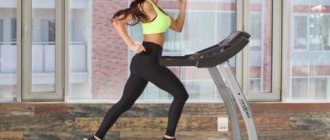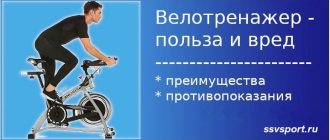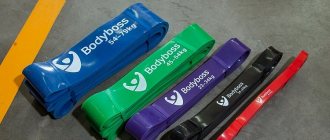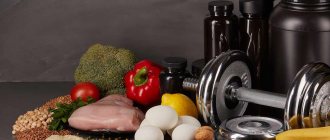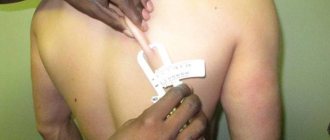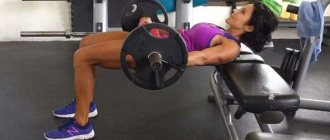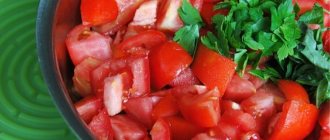Why You Can't Turn Fat Into Muscle
The reason why it is impossible to turn fat into muscle is simple - they are different tissues with different component compositions and work tasks.
Muscle tissue is primarily composed of protein, water, and glycogen (a form of carbohydrate), while body fat is primarily composed of triglycerides (a group of fatty acids).
Additionally, muscle's primary role is to provide movement, while fat is primarily a source of energy to be used when needed. These tissues have other roles, including storing carbohydrates for energy (muscle) and producing hormones (fats).
As you can see, muscle and fat have very little in common, and the body has no way of converting one into the other. Fatty acids simply cannot be converted into proteins and vice versa.
Why then do so many people think that they can do something?
Well, a lot of the confusion stems from the radical “before and after” transformations that make it appear that fat is simply “replacing” muscle.
For example, just look at these success stories from people who follow my diet and strength training programs for men and women:
As you can see, these people are significantly leaner and more muscular in their after pictures, but this is not because they turned fat into muscle.
Instead, they burned fat and gained lean muscle mass at the same time, otherwise known as “body recomposition.”
Technically speaking, what happened was that their fat cells shrank and their muscle tissue increased, producing significant changes in their body composition.
So, although muscle and fat tissue can increase or decrease in parallel, they never transform into one another.
Basic Rules
Fat can be converted into muscle fiber only by organizing proper nutrition and providing the body with a sufficient level of stress in the gym or at home. The mistake of many beginners is that they want to get this result quickly. It is worth knowing that fat burning does not happen instantly and for this it is necessary to take comprehensive measures. Basic recommendations:
- Provide the body with proper nutrition in the form of low-carbohydrate, high-protein foods;
- exclude foods with fast carbohydrates from your diet, such as sweet flour products, cakes, candies and other sweets;
- go to the gym 3 times a week;
- give your muscles rest after training for at least 48 hours;
- during aerobic exercise in the gym, monitor your pulse, it should not be less than 120 beats;
- Take advantage of special sports nutrition and fat burners.
No strict diet without exercise in the gym or at home will help quickly transform fat into muscle, and the effect of the achieved result in the form of weight loss can, after some time, turn the process into a greater gain of unwanted body weight.
It is worth remembering that aerobic exercise in the form of running, swimming and cycling quickly burns fat. Strength exercises and training with a large number of repetitions in one approach are effective for gaining muscle mass.
How to Gain Muscle and Burn Fat at the Same Time
You came to this page wanting to know how to turn fat into muscle.
Now you know what you really want to know, namely how to gain muscle mass and burn fat at the same time.
And you're in luck, because it's actually quite simple.
If you're new to weightlifting, you can easily lose 5 to 8 kg of fat and gain the same amount of muscle in just your first year in the gym... if you follow the tips I give you.
If you are an intermediate or advanced lifter, then you will have to choose one or the other—cutting or bulking—because your “recomposition” days are behind you.
I'm guessing you're in the first camp, so here's what you need to do:
Step 1
Maintain a moderately aggressive calorie deficit.
The only way to lose significant amounts of fat is to eat less energy (calories = energy) than you burn.
Yes, the ratio of calories in versus calories out matters. Great importance.
When you eat fewer calories than you burn, you create an energy deficit that must be replenished, and your body primarily uses its fat reserves to achieve this, converting them into energy.
Keep your body in this state long enough and your fat stores will become smaller and smaller.
That is why the first condition for successful body recomposition is a calorie deficit. Factor that sets fat burning in motion.
No calorie deficit = no fat burning, period.
Your job is to avoid going into too much of a calorie deficit, though, as this can slow down muscle growth and lead to mood disorders, overeating, and a host of other problems.
This is why I recommend an aggressive, but not reckless (fanatical), calorie deficit of about 25%.
In other words, I recommend that you eat about 75% of the energy you burn each day, because based on research, this is enough for you to maintain your fat-burning rate at full speed, but not too much for you to suffer from unexpected side effects.
Step 2
Eat enough protein.
Research shows that when calories are restricted, a high-protein diet leads to increased fat loss, muscle retention, and satiety (which means less hunger and cravings).
Bottom line, if you want to burn fat rather than muscle and generally make it easier, you need to make sure you're eating enough protein.
The daily protein intake is 0.8 grams of protein per kilogram of body weight, however, judging by research, even if you double or triple this amount, this is not enough to maintain, let alone build, muscle mass during a diet.
That's why I recommend that you eat just 2 grams of protein per kilogram of body weight per day when cutting.
If you are very overweight (25% body fat in men and 30% in women), then this value can be reduced to 40% of your total daily caloric intake.
Want to know more about how much protein you should eat? Check out this article.
Step 3
Do a lot of heavy, compound exercises (multi-joint movements).
Multi-joint exercises are those compound exercises that use or recruit several major muscle groups, such as the squat, bench press, military press, and deadlift.
If you want to gain muscle mass and strength as quickly as possible, then your task is to emphasize these exercises in your training, and with heavy weights (75%+ of your 1RM).
There are several reasons for this, but the biggest one is to do increased stress through load progression.
This refers to the increase in muscle tension levels over time and is a major factor in muscle growth.
The best way to provide progressive overload to your muscles is to add weight to the bar over time, so increasing full-body strength is critical for a natural bodybuilder.
And the most favorable approach to training for this purpose is - you guessed it - heavy, basic exercises.
Step 4
(Optional) do high-intensity interval training (HIIT).
You don't need to do cardio to lose weight, but it will speed up the process. Not too much, however, and it will interfere with muscle growth.
That's why I recommend a form of cardio called high-intensity interval training, or HIIT, where you alternate between near-maximal sprints and low-intensity recovery periods.
It's more challenging than traditional low-intensity cardio, but studies show it burns more fat, increases metabolism over 24 hours, and improves insulin sensitivity in muscles (which is good for muscle growth).
This type of training is also better for maintaining muscle than regular low-intensity cardio, mainly because you don't have to do as many needle movements to continue losing weight.
Step 5
Take the right supplements.
I left this until last because it's the least important.
The truth is that most muscle building and fat burning supplements are useless.
Unfortunately, no pills or powders will make you muscular and lean.
However, if you know how to manage your body recomposition with proper diet and exercise, certain supplements can speed up the process.
Fat burning: rules and recommendations
To start the fat burning process, it is necessary to create a deficiency of glucose in the body, which is synthesized from adipose tissue. At the first stage, two factors are of paramount importance:
- the diet should contain fewer calories than the human body uses during the day;
- workouts should include exercises to maximize energy expenditure.
A low-calorie diet will help to quickly reduce the level of body fat, but too strict diets should be excluded. Otherwise, the body will begin to break down muscle fibers.
It is worth remembering that the training program in the gym should be comprehensive, even if the fat deposits are located locally, for example, in the abdomen or thighs. It is impossible to remove fat from just one part of the body, so the whole body must work to eliminate fat deposits.
About fat burning drugs for men >>

You can quickly remove excess weight and subcutaneous deposits with the help of cardio exercises. It is recommended to use the following types of loads:
- traditional running;
- exercise on a treadmill;
- jumping rope;
- fast walk;
- swimming, cycling.
Experts say that to lose weight and body fat, it is not necessary to train in the gym or at home; it is enough to start with intense walking. To maintain muscle tone and normal body function, a person only needs to walk about 5,000 steps a day. You can quickly start losing weight by providing your body with about 10,000 steps a day. Today it is not difficult to purchase a device for counting steps, and a significant number of modern gadgets are equipped with this function.
If you can’t go to the gym, you can organize jumping rope at home. Calorie burning during such training is several times higher than during traditional running. Daily jogging will help you quickly achieve the effect of burning fat. When organizing a low-calorie diet, jogging 3 times a week is enough.
Training should be intense and not long in time. Exhausting exercise can lead to the consumption of muscle glycogen, as a result of which they begin to break down.
Reducing the percentage of subcutaneous fat will allow muscles to appear and will be a signal for the possibility of building muscles to give them relief.
